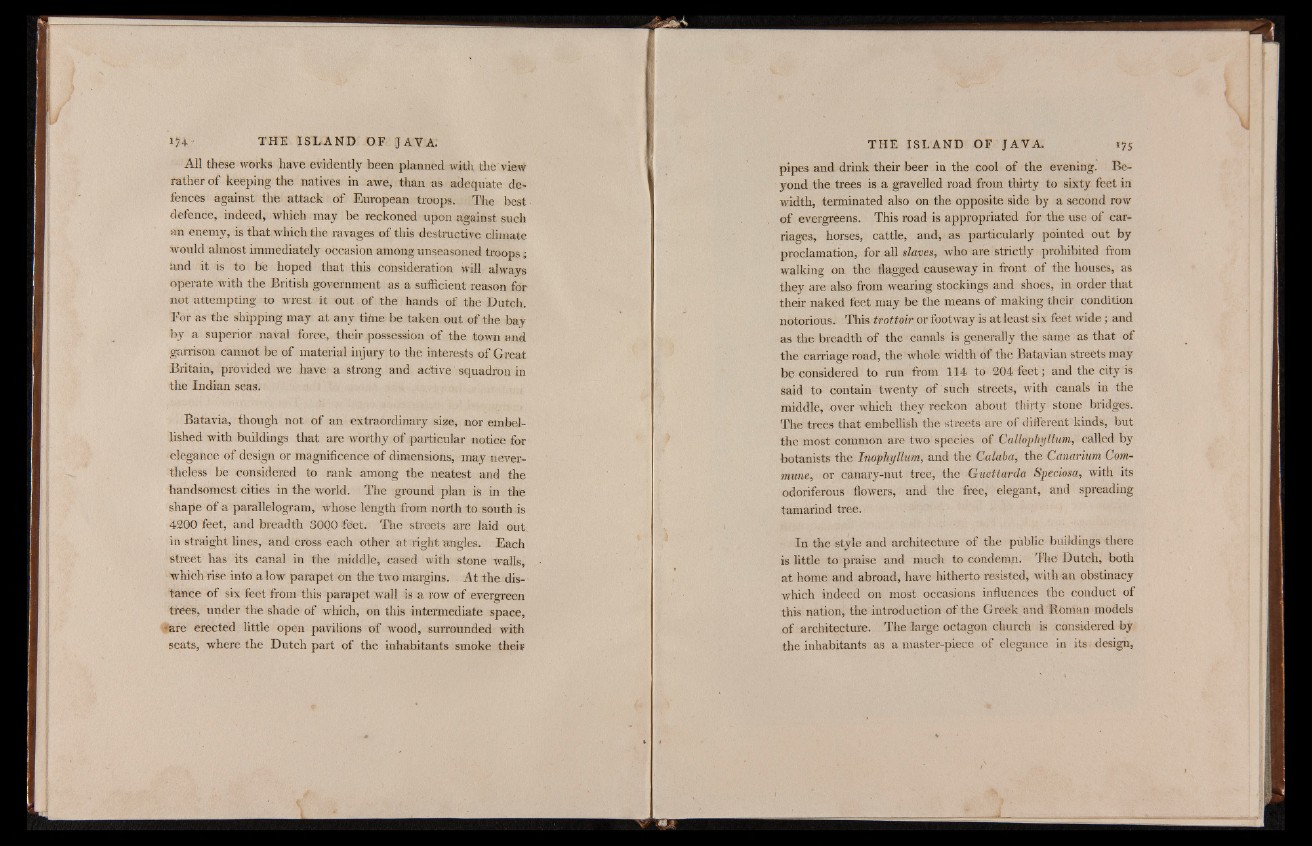
All these works have evidently been planned with the view
rather of keeping the natives in awe, than as adequate defences
against the attack of European troops. The best
defence, indeed, which may be reckoned upon against such
an enemy, is that which the ravages of this destructive climate
would almost immediately occasion among unseasoned troops;
and it is to be hoped that this Consideration will always
operate with the British government as a sufficient reason for
not attempting to wrest it out of the hands of the Dutch.
For as the shipping may at any tifne be taken out of the bay
by a superior naval force, their possession of the town and
garrison cannot be of material injury to the interests of Great
Britain, provided we have a strong and active squadron in
the Indian seas.
Batavia, though not of an extraordinary size, nor embellished
with buildings that are worthy of particular notice for
elegance of design or magnificence of dimensions, may nevertheless
be considered to rank among the neatest and the
handsomest cities in the world. The ground plan is in the
shape of a parallelogram, whose length from north to south is
4200 feet, and breadth 3000 feet. The streets are laid out;
in straight lines, and cross each other at right angles. Each
street has its canal in the middle, cased with stone walls,
which rise into a low parapet on the two margins. At the distance
of six feet from this parapet wall is a row of evergreen
trees, under the shade of which, on this intermediate space,
»are erected little open pavilions of wood, surrounded with
seats, where the Dutch part of the inhabitants smoke their
pipes and drink their beer in the cool of the evening. Beyond
the trees is a gravelled road from thirty to sixty feet in
width, terminated also on the opposite side by a second row
of evergreens. This road is appropriated for the use of carriages,
horses, cattle, and, as particularly pointed out by
proclamation, for all slaves, who are strictly prohibited from
walking on the flagged causeway in front of the houses, as
they are also from wearing stockings and shoes, in order that
their naked feet may be the means of making their condition
notorious. This trottoir or footway is at least six feet wide ; and
as the breadth of the canals is generally the same as that of
the carriage road, the whole width of the Batavian streets may
be considered to run from 114 to 204 feet ; and the city is
said to contain twenty of such streets, with canals in the
middle, over which they reckon about thirty stone bridges.
The trees that embellish the streets are of different kinds, but
the most common are two species of Callophyllim, called by
botanists the Inophyllum, and the Calaba, the Canarium Commune,
or canary-nut tree, the Guettarda Speciosa, with its
odoriferous flowers, and the free, elegant, and spreading
tamarind tree.
In the style and architecture of the public buildings there
is little to praise and much to condemn. The Dutch, both
at home and abroad, have hitherto resisted, with an obstinacy
which indeed on most occasions influences the conduct of
this nation, the introduction of the Greek and Roman models
of architecture. The large octagon church is considered by
the inhabitants as a master-piece of elegance in its design,